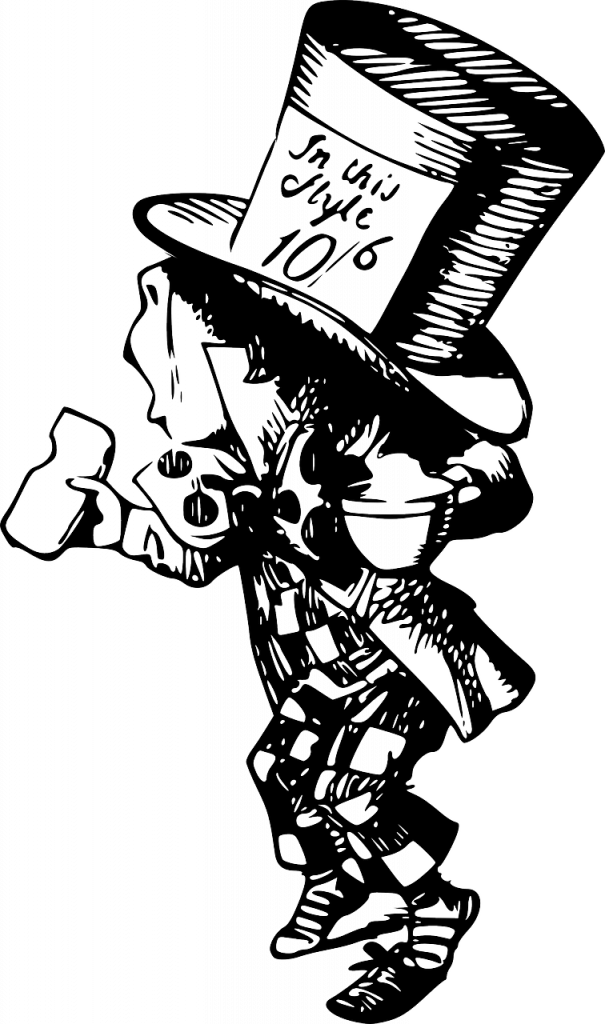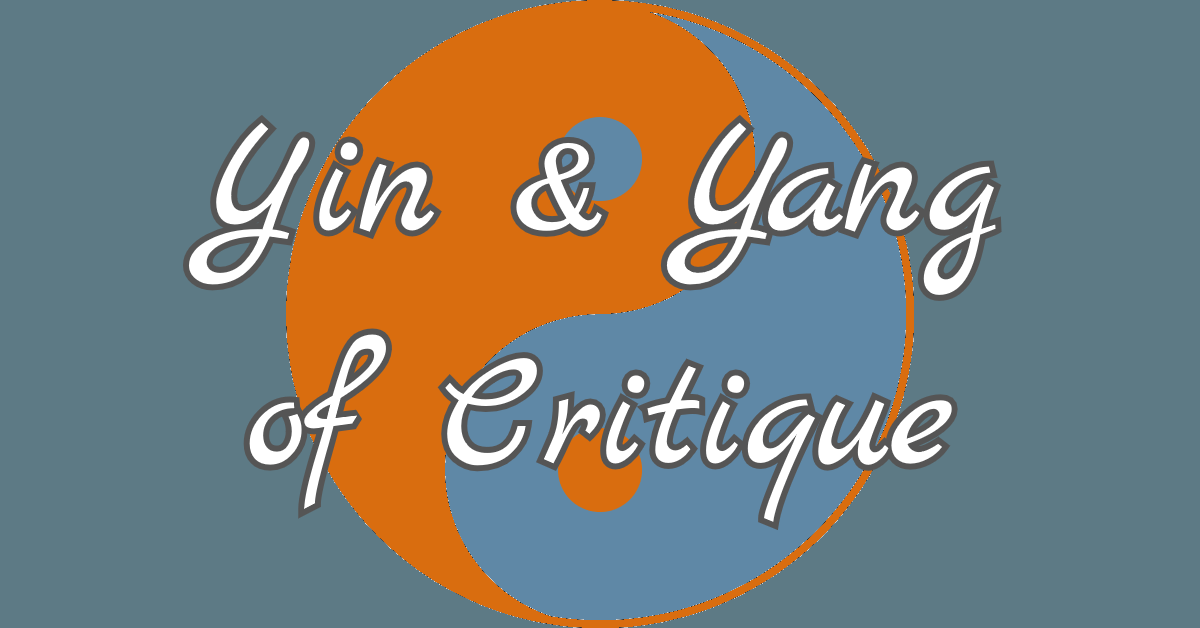Literary criticism and critique are overlapping terms. Criticism means to negatively criticize a work. On the other hand, critique is intended to express a judgement about a work, both negative and positive, the yin and yang. In Chinese philosophy the terms describe opposite but interconnected forces and both are essential. Critique of a work-in-progress is very helpful to an author in the revision process, often increasing the chance of publication.

Critique is a polite endeavor focused on the written word, not on the author or a person providing a critique. Critiques should be given and received in a supportive environment with the understanding and goal of becoming a better writer. There should never be personal attacks. The overall purpose is to elevate creative ideas of the writer for the later enjoyment of readers. The writer is always the captain of their ship, so they may or may not change course based on a critique. Indeed, some critiques are more insightful than others. However, only a foolish writer ignores a problem identified in several critiques.

Get the best critique
Unlike a beta read (or full read of a work), a critique is often performed on just a segment, perhaps ten pages out of three hundred. So, providing context to the critiquer quickly orients them to the story world. An author’s brief summary (300 words) with specific questions will result in more accurate critiques. Such a summary might include what has happened so far, the intended point-of-view, the protagonist, the antagonist, and location in the story. Questions might include whether the humor was clear and appropriate or whether a scientific reference or a military uniform is correct?
How to receive a critique: LISTEN and THINK

Criticism can be painful to an author’s psyche, but it shouldn’t be! A psychological trick to is to change your personal point of view. Become a drone looking down on your masterpiece and the person critiquing. Listen to the critique, analyze, does that comment apply, perhaps yes, analyze, could I make a change, yes, analyze new comment, is that overly critical, yes, ignore, analyze new comment, spot on, got to change that paragraph… This robotic objectivity makes a huge difference. You can walk away smiling.
Contents of a critique

Our group does critiques verbally with typed suggestions on electronic documents. The combination works well, but critiques in other groups may use only one medium. Experienced critiquers develop their own style. But, when learning to do critiques, the following steps may be helpful:
- Start with a one-sentence synopsis of the work submitted (the 10,000 foot view). This tells the author that the critiquer understands the setting and action. Then, add another sentence to reflect what it seems the author is trying to accomplish. Like: the section sets up a conflict between two characters.
- Positives: Mention several parts (3-4) that worked well. In the text, mark a few sentences that really sparkled. By knowing what is positive about a story, authors can expand those positives and be cautious about changing good parts during inevitable revisions.
- Negatives: Mention several parts (3-4) that didn’t work well. For example, the characters seem to have similar personalities or there is not much conflict in a scene. Mark sentences or scenes containing potential problems and suggest a possible fix. The suggested fix is important because it makes the problem more clear and new writers like the help. Avoid line-editing of early drafts since authors should be using a grammar checker anyway. If reading a near-final draft, line-edit comments are appreciated to catch things the author or grammar checker missed.
- Try to end on a positive note. Conclude with another “shout-out” of a strong positive and mention any comparable books or songs that come to mind.
Self-example
If a writer is using too much passive voice, a critiquer can simply point out instances of active and passive voice. Indicate that the stronger active voice is already familiar to the writer and suggest they use it to replace passive voice. The teaching technique is also helpful for other writing issues.
Blind spots
Any author can get tunnel vision into their story. Authors build worlds that become familiar, develop characters they know and understand, and put those characters in situations to which they already know the outcome. Invariably, some detail that the author takes for granted may not make it to the written word, either through oversight or through editing.
Common blind spots are effectiveness of humor, pacing, and conversation. In essence, are the jokes funny, does the reader get bored or lost, is there too little expression of thoughts, and is the dialogue realistic?
Positive feedback

Writers receive so many rejections that their egos have been smashed into dust. A little positive feedback is therapeutic. “What? I did something right?” Thank goodness someone told J.K. Rowling that Harry Potter did something right. Twelve rejections later, her story was published.
Recent survey of writers
A survey of members of Speculative Fiction Writers Association indicated that positive comments were most helpful when they were very specific. A few positive and helpful comments they have received included:
- Good pacing
- Strong beginning or ending
- Humor was effective
- Dialogue seemed authentic
- I want to keep reading
- This version is better than the last
The least helpful were generalized positive comments:
- Great job
- Nice characters
- Publishers would be crazy to reject that story (usually gets a laugh)
What’s working, what’s not?

It’s impossible to have a comprehensive list of what makes a good story because authors, especially speculative fiction authors, are inventive creatures who will find new ways to express themselves that no one has considered. However, when reviewers put the magnifying glass to a story the following issues are always “topics-of-interest”. Perhaps these elements of craft are hard to attain or perhaps easy to overlook. New writers hear one of them as criticism and gasp. Experienced writers receive the same criticism and nod knowingly–that darned blind spot.
“Topics-of-interest” could be presented either as positives or negatives. Negatives can be harsh: “The title does not match the story.” Or negatives can be soft: “The title and story subject could be in better alignment.” Soft is usually better, but it’s important to get the point across.
Topics of interest
- Title matches story
- Story matches genre
- Originality
- Strong hook for first scene
- Characters have goals, motivation and conflict
- Dialogue is authentic
- The flow of writing is smooth and logical
- The type of point-of view is consistent
- Narrative types (narration, dialogue, internal thought, description) are balanced
- Main characters are distinct and well developed
- Steady forward movement of plot
- Obvious emotion
- Well defined story world
- Minimal filter words
- Showing and not telling
- Orientation to point-of-view, place, and time at start of scenes
- Clarity of prose without excess verbiage
- No cliches
- Many more action tags than dialogue tags
- Entry and exit from flashbacks are clear
- Exciting plot
- Hooks at end of scenes
- Satisfying conclusion
Happy critiquing!
— Ralph, Matt, and Cheryl

Speculative Fiction Writers is an online critique group. The members support and encourage each other toward the goal of publishing what they write.

